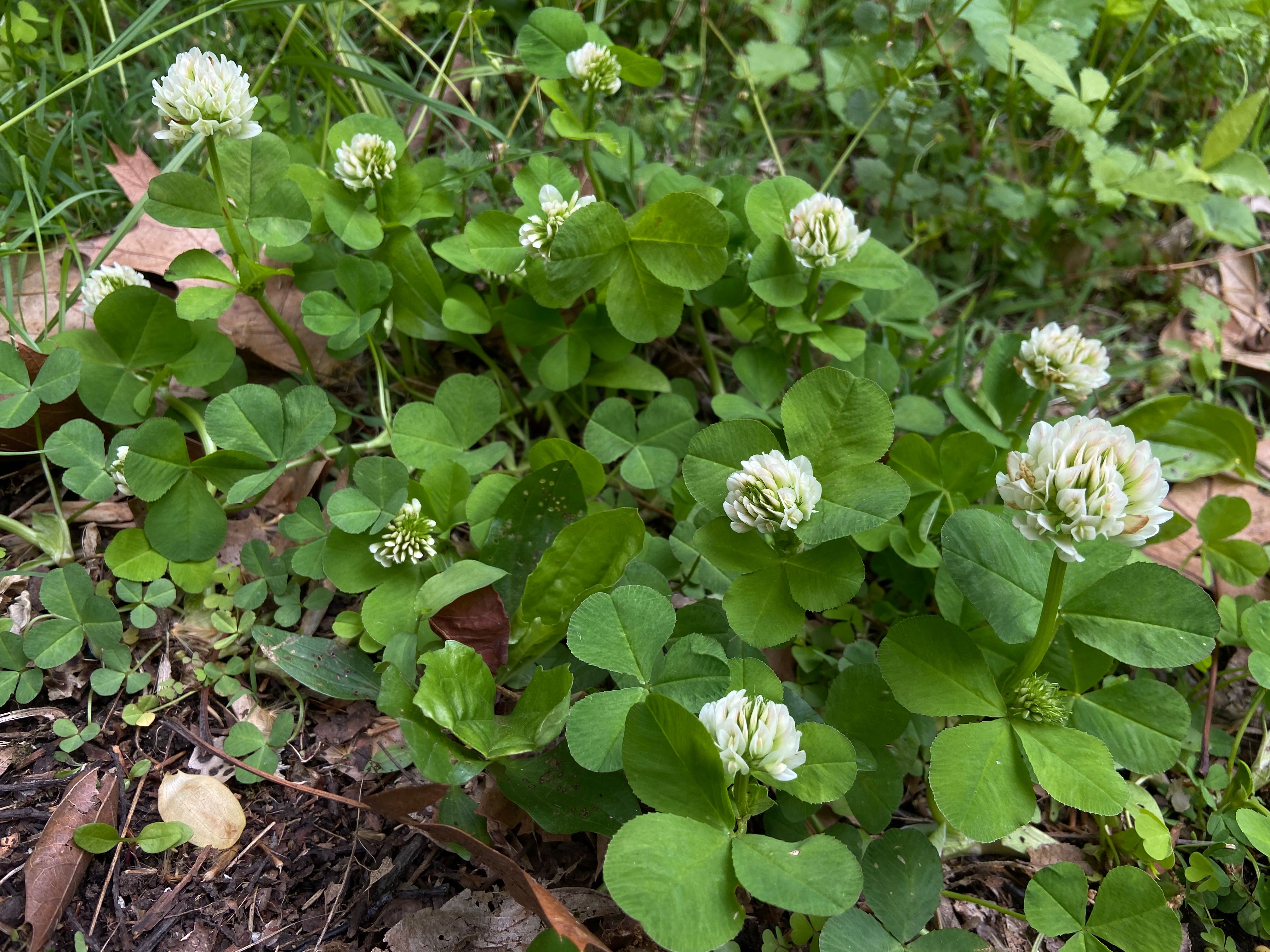Makayla Bryant1, Jonathan Omar Cole Kubesch1,2
- Virginia Tech School of Plant and Environmental Sciences; Blacksburg, VA
- Country Home Farms; Pembroke, VA
Eastern North America’s tall fescue grasslands produce a plethora of beef stockers, replacement heifers, and cow-calf pairs. These pastures replaced a variety of native woodlands and grasslands in the past 70 years. While tall fescue is a useful forage for much of the year, most tall fescue acreage consists of toxic endophyte Kentucky 31 tall fescue. This endophyte reduces animal performance in terms of average daily gain, reduced reproductive success, and decreased milk production. A lot of this tall fescue acreage cannot be easily converted to alternate forages, such as novel endophyte tall fescue or warm-season forages, in part due to soil conservation as well as economic constraints.
Producers might be able to reduce or eliminate toxic endophyte effects in cattle by overseeding this tall fescue with clovers. Clovers (Trifolium spp) are commonly overseeded into tall fescue stands. Red (T. pratense) and white (T. repens) clovers are currently recommended in Kentucky, Tennessee, and Virginia for pasture clover. There are native alternatives to red and white clover.
A suite of native clovers are present in the United States. Kentucky historically had at least three native species from the Mississippi River to the Appalachian Plateau. These species were present in native grasslands and woodlands throughout the region at the time of European settlement. Native clovers declined with land use change, overgrazing, and fire suppression, but they are still present in modest populations. Native clovers serve a similar nutritional role to wildlife as red and white clovers serve for livestock. Conservation crop science has led to some study as to whether native clovers are agronomically competitive with red and white clover.
Cattle nutrition can justify native clover conservation in pastures
Clovers provide crude protein to cattle in cool-season grasslands. This additional crude protein comes with no additional nitrogen (N) fertilization. Native clovers often serve as the protein concentrate for native ungulates such as bison and deer, as well as monogastric species such as turkeys. Secondary metabolites, such as isoflavones, can dilute or interfere with the alkaloids found in tall fescue pastures. Screening native clover species for traditional metrics of nutritive value can make subsequent analysis for secondary metabolites more effective. Ultimately, this project would provide publishable data regarding the nutritional value of native clovers in comparison to red and white clover under common conditions. This data would guide existing research at Virginia Tech, including Bee-friendly Beef (NIFA-funded). Native clovers are a prime candidate for native plants in livestock production. Including native plants in working grasslands could provide production and conservation opportunities, especially if native clovers offer improved animal nutrition over introduced species.
Native clovers can support cattle and co-exist with non-native grasses
Native clovers are an important protein source in the western rangelands. Species nutritional value has been reported for several of the species native to California, Wyoming, and Oregon range (Bentley & Green, 1954; Cooper, 1957; Cooper and Hunter, 1959; Hamilton, 1961; Hamilton & Gilbert, 1971). These western clovers establish in stands and grow similarly to their nonnative equivalents (Lulow, 2008). Clovers from the eastern United States have only recently been investigated for their agronomic potential. Native clovers have similar agronomic performance relative to traditional red and white clovers.

1990s research suggests that native and nonnative clovers cannot be easily crossed, but native species such as Carolina (T. carolinianum) and peanut (T. polymorphum) clovers in addition to the buffalo clovers have improved pest resistance relative to red and white clovers (Taylor et al., 1994; Quesenberry et al., 1997). Running buffalo clover (T. stoloniferum) is competitive in orchardgrass stands subject to hay and forage clipping schedules (Barker and Sparks, 2013). Running buffalo clover also appears to persist in regularly grazed pastures (e.g. Taylor Fork Ecological Area, Eastern Kentucky University; Good Enough Farm, Peru, Indiana). Buffalo clover (T. reflexum) has a similar seed weight and comparable establishment as red and white clovers (Sanne et al., 2023; Kubesch et al., 2023). This work is lacking in reporting the nutritional value of these native clovers.
(more…)















